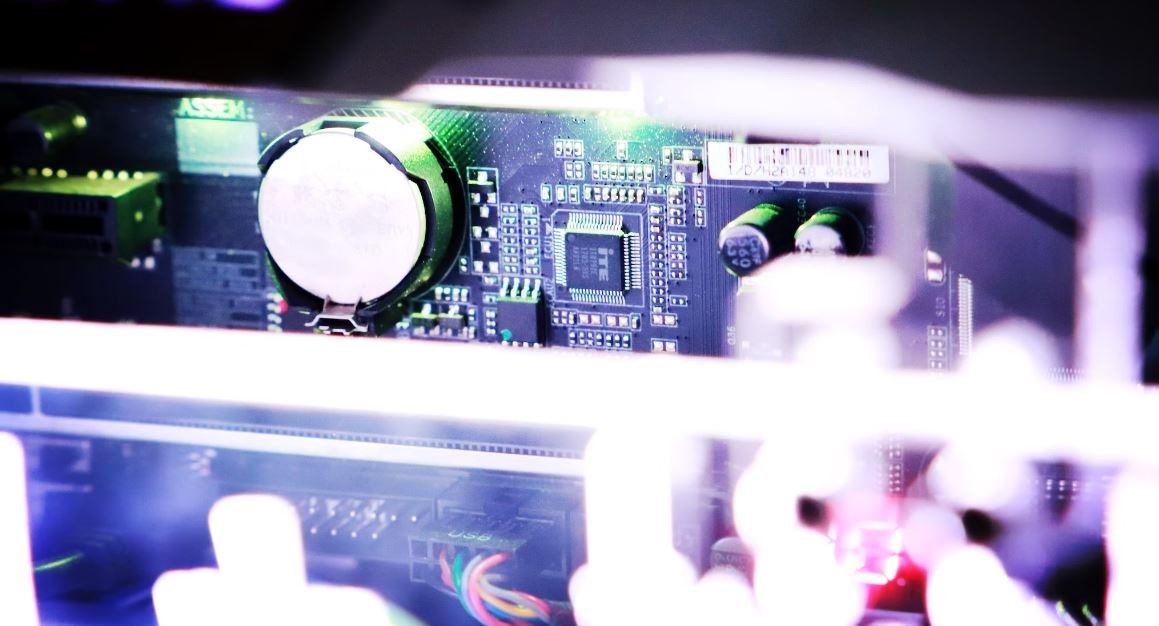Generative Video Art
Generative video art is a form of digital artwork that is created using algorithms to generate visuals and animations in real-time. It combines coding and artistic creativity to produce unique and ever-evolving video content. This emerging art form has gained popularity in recent years due to its ability to create captivating and visually stunning experiences.
Key Takeaways
- Generative video art is a form of digital artwork created using algorithms.
- It combines coding and artistic creativity to produce unique and ever-evolving video content.
- This art form has gained popularity due to its ability to create visually stunning experiences.
The Origins of Generative Video Art
Generative art has its roots in the broader field of computational creativity, which explores the intersection of technology and art. It was pioneered by artists and programmers who sought to push the boundaries of traditional artistic mediums by harnessing the power of computers and algorithms.
*Generative video art allows artists to create dynamic and ever-changing visual representations.* By leveraging algorithms, artists can explore new possibilities and outcomes that would be difficult or impossible to achieve manually.
The Process of Creating Generative Video Art
- Generative video art starts with an idea or concept that the artist wants to explore.
- The artist then translates this idea into code, using programming languages such as Processing, Max/MSP, or openFrameworks.
- Through experimenting with different algorithms and parameters, the artist can generate a wide range of visuals and animations.
- The resulting artwork is often driven by unpredictable and emergent behaviors, making each viewing a unique experience.
Applications and Impact
Generative video art has found numerous applications across various sectors, including:
- Entertainment industry: Generative video art has been used in music videos and live performances to create mesmerizing visual effects that synchronize with the music.
- Advertising and marketing: Brands have embraced generative video art to create engaging and interactive advertisements that capture audience attention.
- Education and research: Generative video art has been used in educational contexts to teach coding and computational thinking.
*Generative video art has the potential to redefine our understanding of creativity, blurring the lines between artist and machine.* It challenges traditional notions of authorship and invites viewers to actively engage with the evolving artwork.
Examples of Notable Generative Video Artists
| Artist | Notable Works |
|---|---|
| Casey Reas | Processing |
| Onformative | Black Rain |
| Quayola | Strata series |
Advancements and Future Possibilities
As technology continues to evolve, generative video art is expected to become even more sophisticated and accessible. With advancements in machine learning and AI, artists will be able to create video art that can adapt and respond to its environment in real-time. This opens up exciting possibilities for interactive installations, virtual reality experiences, and immersive art installations.
*The future of generative video art holds endless potential, pushing the boundaries of human creativity and expression.* With each new development, artists will continue to redefine what is possible in the realm of digital art.
Conclusion
Generative video art is a dynamic and ever-evolving form of digital artwork that combines coding and artistic creativity. By harnessing the power of algorithms, artists can create visually stunning and one-of-a-kind video content. This emerging art form has found applications in various industries and will continue to evolve with advancements in technology. The future of generative video art holds endless possibilities for redefining creativity in the digital age.

Common Misconceptions
Misconception 1: Generative video art is just random and lacks creativity
One common misconception surrounding generative video art is that it is simply a random display of visual elements without any artistic intention or creativity. However, generative video art is created through algorithms and coding that are specifically programmed to produce unique and complex visual experiences. It involves careful planning and thoughtful design elements.
- Generative video art utilizes complex algorithms to produce visual patterns.
- Creative decisions are made during the programming phase to dictate the kind of output the artist desires.
- Generative video art can evoke emotions and convey artistic messages just like any other form of art.
Misconception 2: Generative video art is only for tech-savvy individuals
Another misconception is that generative video art is limited to those with advanced technical skills and knowledge of programming. While understanding coding can enhance the creation process, there are user-friendly tools and software available that allow artists without technical expertise to explore this medium and express their creativity.
- Various user-friendly software programs are designed to simplify the process for artists without coding experience.
- Artist communities and workshops provide support for beginners in learning generative video art techniques.
- Generative video art can act as a gateway for individuals to learn about coding and programming.
Misconception 3: Generative video art is only created digitally
Many people assume that generative video art can only be created using digital tools and software. However, this is not the case. While digital methods are popular due to their accessibility and flexibility, generative video art can also be created using analog techniques and traditional art forms.
- Some artists combine analog and digital methods to create generative video art.
- Traditional art mediums like painting or sculpture can be used as inputs for generative video art creation.
- Generative video art can be projected onto physical surfaces, creating immersive installations.
Misconception 4: Generative video art is always spontaneous and uncontrolled
Another misconception is that generative video art is always produced in real-time and lacks control or intention from the artist. While real-time generative art exists and can create unpredictable visuals, not all generative video art is spontaneous. Many artists carefully craft their algorithms to achieve specific visual outcomes and may even iteratively refine their work over time.
- Generative video artists often spend significant time designing and refining their algorithms.
- Artists can fine-tune and control the variables within the generative process.
- Generative video art can involve a combination of real-time and pre-recorded elements to achieve the desired result.
Misconception 5: Generative video art is solely for the digital realm
There is a common misconception that generative video art is limited to digital screens and online platforms. While it thrives in these spaces, generative video art can also transcend the digital realm and find its place in physical galleries, installations, and even public spaces. The physicality of generative video art can add a new dimension to the viewer’s experience.
- Generative video art installations can transform physical spaces, creating immersive environments.
- Public art projects may incorporate generative video art on large outdoor displays.
- Generative video art can be showcased in galleries alongside traditional artwork.

Generative Video Art: Unleashing Creativity Through Algorithms
Generative video art is an innovative form of visual expression that merges technology and creativity. Artists harness the power of algorithms to create captivating and ever-evolving video artworks. This groundbreaking medium opens new possibilities for artistic exploration and pushes the boundaries of traditional video art. The following tables showcase the diversity, impact, and fascinating aspects of generative video art.
Evolving Visualizations: Dynamic and Fluid
Generative video art leverages algorithms to generate visually mesmerizing and ever-changing compositions. These works captivate audiences with their fluidity and constant evolution in real-time.
Interactive Installations: Engaging the Audience
The interactive nature of generative video art allows viewers to become active participants in the creative process. Artists design immersive installations where the audience’s actions directly shape the evolution of the artwork.
Algorithm Diversity: Unlocking Infinite Creativity
Generative video art thrives on the versatility of algorithms, each having unique characteristics and capabilities. Artists explore a wide range of algorithms, such as fractal patterns, cellular automata, genetic algorithms, and noise-based algorithms.
Sonic Synchronicity: Merging Sound and Vision
In generative video art, visuals and audio harmoniously intertwine to create multisensory experiences. The synchronization between the imagery and sound enhances the impact and emotional depth of these artworks.
Data-Driven Art: Transforming Information into Artistic Expression
Generative video art harnesses data from various sources, transforming it into visually stunning representations. Artists utilize datasets on weather patterns, social media interactions, or scientific phenomena to create captivating visual narratives.
Real-Time Adaptation: Dynamic Response to External Inputs
Generative video art possesses the ability to react and adapt in real-time to external inputs. Artists integrate sensors or live data feeds, allowing the artwork to respond dynamically to changes in the environment or user interaction.
Collaborative Creations: Artists and Algorithms as Collaborators
Artists embrace algorithms as creative collaborators, merging human ingenuity with the computational power of machines. This collaborative process ensures that generative video art remains a testament to the symbiotic relationship between human creativity and technological advancements.
Generative Video in Virtual Reality: Immersive and Transformative Experiences
Virtual reality offers a new frontier for generative video art, enabling viewers to immerse themselves fully in the artist’s envisioned world. This technology enhances the transformative and captivating nature of these artworks.
Perpetual Evolution: A Never-Ending Journey of Discovery
Generative video art is a continuously evolving field, fostering innovation and experimentation. Artists embrace this journey of discovery, pushing the boundaries with every new creation and opening up endless possibilities for future artistic expression.
Conclusion
Generative video art transcends traditional artistic boundaries, fueled by the fusion of algorithms and human creativity. This groundbreaking medium showcases mesmerizing visuals, interactive experiences, and the transformative power of technology. The tables above offer a glimpse into the diversity, depth, and potential of generative video art as it continues to push artistic boundaries and captivate audiences worldwide.
Frequently Asked Questions
What is generative video art?
Generative video art refers to the creation of visual artworks that are generated using algorithms and computer programs. These artworks often change over time or in response to various inputs, creating dynamic and evolving visual experiences.
What are the main characteristics of generative video art?
Generative video art is typically characterized by its algorithmic nature, meaning that the artwork is created through a series of rules or instructions rather than directly by the artist’s hand. It often involves the use of randomness, procedural generation, and real-time rendering to create interactive and unique visual experiences.
What tools or software are commonly used to create generative video art?
There are several software tools and programming languages commonly used in the creation of generative video art, including Processing, Max/MSP, TouchDesigner, and openFrameworks. These tools offer a range of functionalities for creating and manipulating visuals, as well as integrating with other hardware or software components.
Can anyone create generative video art, or is it only for experienced programmers?
While having some programming knowledge can certainly be helpful in creating generative video art, it is not a prerequisite. Many tools and software have user-friendly interfaces and provide visual programming environments that allow artists with little or no coding experience to create their own generative artworks.
How can generative video art be exhibited or presented?
Generative video art can be presented in various ways, depending on the artist’s intention and the context. It can be shown as large-scale projections in galleries or museums, displayed on monitors or screens, or even integrated into immersive installations. Some artists also create generative video art specifically for online platforms.
Are there any copyright issues associated with generative video art?
Like any form of art, generative video art can be subject to copyright protection. The specific rights and regulations may vary between countries, but generally, the artist who creates the artwork holds the copyright. It’s important to respect the artist’s rights and seek permission if you wish to use or reproduce their generative video art.
Can generative video art be interactive?
Yes, generative video art can be interactive. Many artists incorporate interactivity into their generative artworks to engage the viewer and allow them to influence or participate in the visual experience. This can be achieved using sensors, cameras, or even through user input via keyboards or touchscreens.
What are some notable artists working in the field of generative video art?
There are several notable artists who have made significant contributions to the field of generative video art, including Casey Reas, Vera Molnar, Manfred Mohr, and Brian Knep. These artists have pushed the boundaries of what is possible within the realm of generative visual creation and have inspired future generations of artists.
Can generative video art be considered a form of artificial intelligence?
Generative video art often utilizes algorithms and computational processes, but it is not necessarily a form of artificial intelligence. While AI can be involved in the creation process, generative video art primarily focuses on the aesthetics and creative expression enabled by algorithmic generation and real-time rendering.
Where can I learn more about generative video art?
There are numerous online resources, books, and courses available for those interested in learning more about generative video art. Some recommended starting points include online forums and communities dedicated to generative art, tutorial websites, and books such as “Generative Design” by Hartmut Bohnacker, Benedikt Groß, Julia Laub, and Claudius Lazzeroni.




